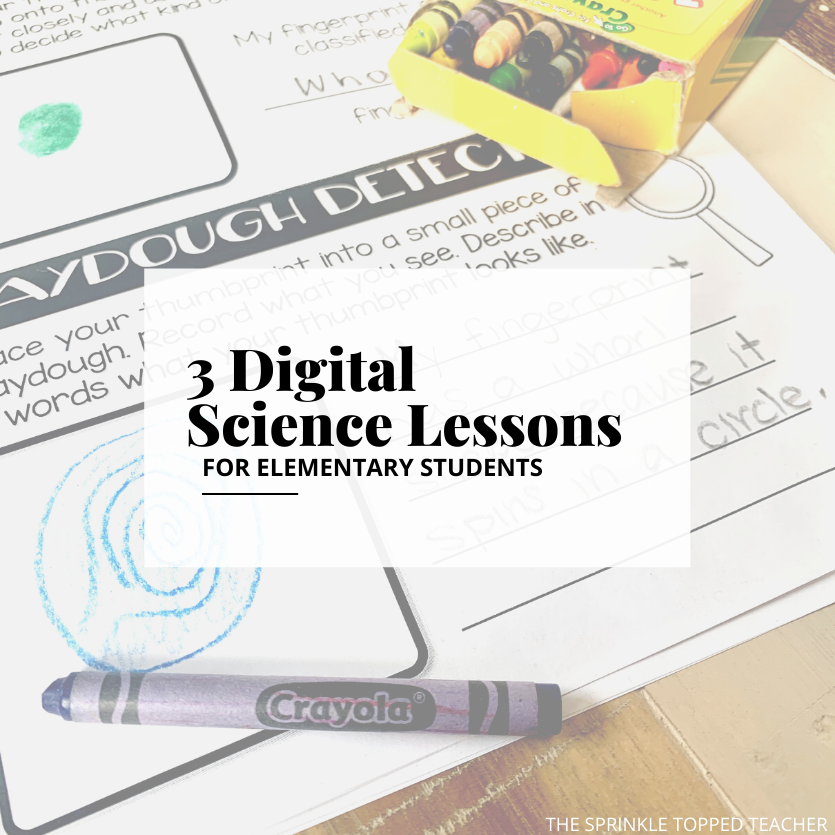
3 Digital Science Lessons for Elementary Students
Science experiments in the elementary classroom are always a blast. It’s so fun to see students’ curiosity come alive, and it’s a fantastic way to get them interested in STEM from a young age.
However, these days teachers are having to transition their in-person lessons to digital formats. But even on distance learning days, it’s still possible for students to practice science experiments at home — with the right digital activities!
I want to share with you some of my favorite digital science lessons for elementary students. It’s important to stay on top of their science curriculum, even if the learning is happening at home. With these resources, the learning (and fun) never has to stop!
Each of these science activities for distance learning are educational, engaging, and super easy to follow. Parents will appreciate the simple directions and few supplies necessary to complete these experiments at home.
If you’re looking for the best ways to incorporate digital science lessons into your curriculum, look no further. Read on to discover my best tips and methods to teach these digital science lessons during distance learning!
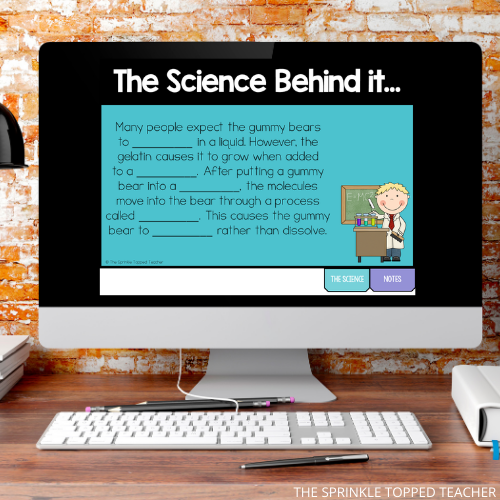
How do you teach digitally?
There’s no one right way to use these science activities for distance learning! Choose the method that works best for you and your students. Here are three options teachers tend to find easiest!
1. Pre-record the experiment
Comfortable in front of the camera? Simply record yourself completing every step of the experiment and send the video to your students. They can either observe what happens in the experiment from the video, or follow along with their own supplies at home as they watch. Either way, it’s a great option if you want the teaching to be one-and-done. You record once, and you’re good to go!
2. Complete the experiment live
Does your class do distance learning on Zoom? If so, lead the class through the experiment on your Zoom call or other video meeting. This way, you can time each step to match the class’s progress. Students will also be able to ask you questions along the way.
3. Have students complete the activity at home
Each one of these digital science lessons for elementary students has easy step-by-step instructions, so they can comfortably complete the activities at home. You can also customize the directions to fit your students’ needs! Make sure that their families are aware of the activity so they can have the necessary assistance and supplies at the ready.
Without further ado, let’s get into my favorite digital science lessons for elementary students!
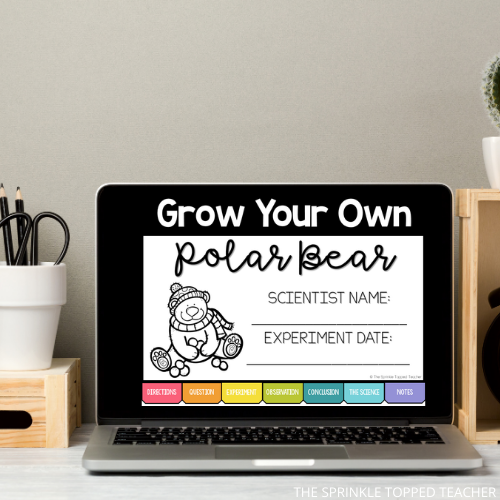
Grow Your Own Polar Bear
This Grow Your Own Polar Bear activity is as delicious as it is informative! Students explore the concepts of the scientific method and osmosis in this experiment. They will soak their gummy bears in different solutions to see which one grows the largest! The solutions require only a few household items to make: water, baking soda, vinegar, and salt. You can use this experiment for a unit on polar bears, too!
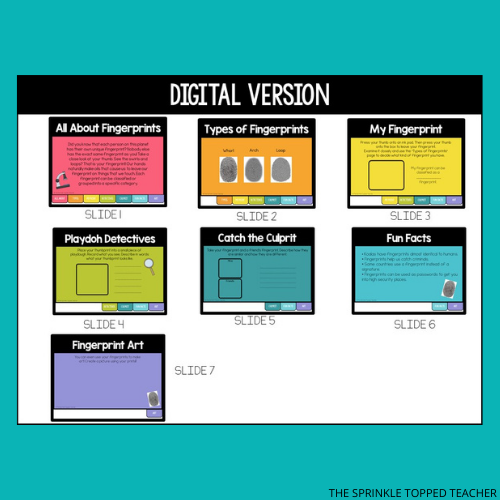
Fingerprint Science
Let your students become forensic scientists for a day with this Fingerprint Science experiment! This activity walks them through the steps of the scientific method while they investigate their fingerprints. The experiment covers three types of fingerprints and includes super fun facts about fingerprints in humans and animals! Fingerprint science is great for every level of elementary student, even up to fifth grade. All students need are an ink pad and playdough!
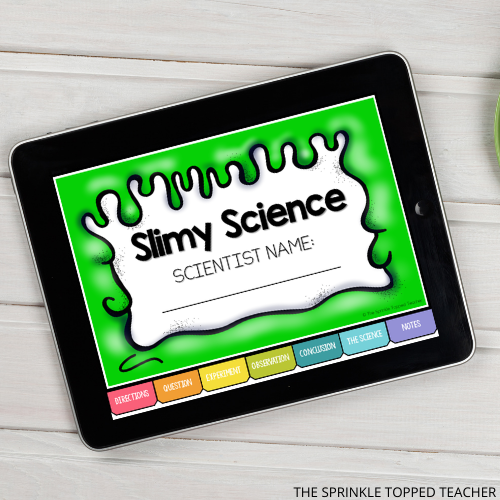
Slime Science
Every elementary student LOVES slime, and now they can make their own! This Slime Science Experiment teaches the scientific method with an interactive science book and super fun experiment. To make their own slime and follow the lesson, they combine borax, water, and glue! Use this activity at Halloween or any time of the year.
If you’re teaching in-person, you can still have fun with students teaching them these experiments! All three of these resources come with a printable version for easy distribution in the classroom. Just print the handouts, gather the supplies, and you’re ready to experiment!
Looking for more digital activities to teach the scientific method? Check out this bundle of 7 Easy Science Experiments! The bundle includes paper and digital versions of each activity. They are perfect for students from pre K to 6th grade!
Conclusion
Now your elementary students can take their love of science home with them with these three digital science lessons. Pre-record, teach live, or have your students complete the activity at home — whichever suits your class best! These activities contain everything you need to teach fun science lessons while distance learning. Enjoy!
What are your favorite ways to teach science digitally? Which experiment do you plan on trying with your class? I’d love to hear from you!